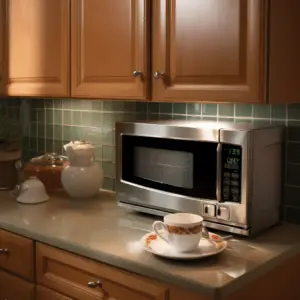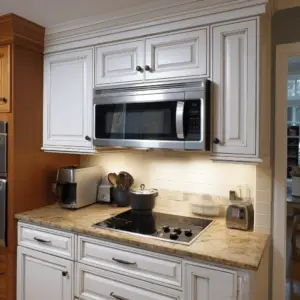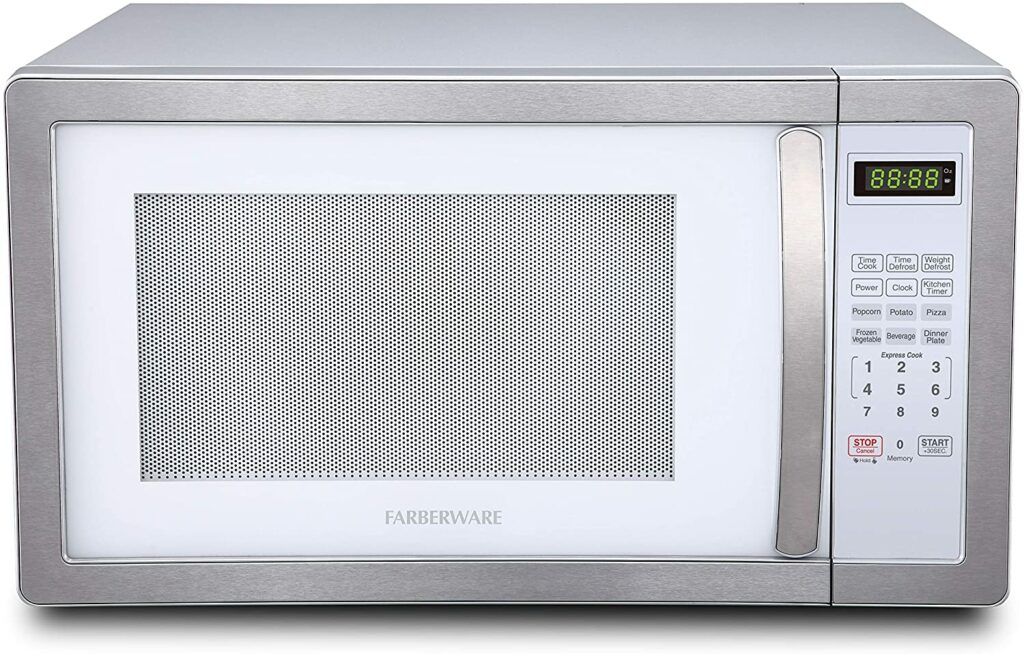Microwave Outlet Considerations, Purchasing a new microwave for your kitchen can be an incredible experience. However, deciding where to plug it can be, at times, tricky. You only have two options. You can either create a new dedicated outlet or plug it into a shared outlet.
Table of Contents
Do 1000-watt microwaves require a dedicated circuit?

Yes, to answer briefly. A microwave’s power efficiency ranges from 60 to 70 percent. As a result, your 1000W microwave will draw between 1450 and 1700 watts. This means you will require an outlet that can reliably deliver 1700 watts. NEC regulations say no device can use more than 80% of the circuit’s rated output. Consequently, a dedicated 18 amp circuit is required.
That was a quick response. Continue reading as we dive deeper into the topic
Dedicated Circuit or Shared Circuit?
Let’s start by being clear about something. The instructions provided by the manufacturer are your best bet. If the equipment’s user manual directs you to use a 20 amp outlet, do as instructed. The safest course of action is to adhere to the manufacturer’s directions.
What happens if the manufacturer makes no such pointer? So you’ll have to get the calculator out then. Not to worry, in any case. Calculations are straightforward.
A standard microwave has a power efficiency of between 60 and 70 percent. This indicates that it can only use 60% to 70% of the electricity it draws from the wall. Therefore, 60 to 70 percent of the power drawn for a 1000 W microwave equals 1000 W.
Assume for now that your device has a 60 percent power efficiency. To give yourself more leeway for a mistake, we advise that you use the lesser estimate. The result of dividing 1000 W by 60% is 1666.66 W. 1700 W can be rounded up from that.
The NEC regulations are what you should consider next. Under NEC guidelines, any countertop cooking appliance is only permitted to use 80% of the circuit load. In other words, 1700 W is 80% of the circuit’s maximum power output.
You’ll reach 2125 W if you continue along the previous path. This can be rounded up to 2200 W to make the computation simpler. The final step is to divide this by the 120 V standard household wiring voltage. It gives 18 amps.
Therefore, a 1000 W, 60% efficient microwave will require an 18 amp outlet. You’ll need a 20 amp circuit because most domestic circuits are 15 or 20 amps.
Consider the outlet’s height while installing a new outlet for the microwave. It matters a lot in the case of microwaves.
Any Possible Alternatives?
Yes. A workaround exists. Consider a 20 amp circuit that is not a dedicated one. It might still be helpful to you. But it will take a little more effort.
You may have observed that the microwave requires 18 amps to operate correctly. However, the circuit offers 20 amps. Up to 2400 W of electricity can be produced by the 20-amp circuit.
Assume that the total wattage of all other appliances is less than 700. You may then connect the microwave to that circuit. But be cautious about plugging in any other device in that outlet.
Heavy-duty appliances significantly reduce the number of devices that can use one outlet.
You will be taking a chance even if nothing else is plugged into the outlet. This is mainly because a circuit breaker will trip in the event of any power spike.
What Are Security Measures Required For a 1000 Watt Microwave?
Do 1000-watt microwaves require their own circuits? They do, indeed. However, a dedicated circuit’s additional headroom is insufficient as a safety precaution. You’ll also require a few more safety precautions.
- Kitchen Outlet Requirements
The NEC argues that outlets can be placed up to 48 inches apart. The distance between any point on the kitchen counter and an outlet must not exceed 24 inches.
- Tamper Resistance
Any outlet that is under 5.5 feet high needs to be tamper-resistant. Outlets that are tamper-resistant aid in kid safety.
Microwave Outlet Considerations a popular misconception that tamper-resistant outlets need additional force. That is not entirely true. You might want to check your TR outlet if it requires more force.
- AFCI and GFCI Protection
All of your kitchen outlets should have GFCI protection installed. When it detects a surge, a GFCI outlet’s inbuilt circuit breaker turns off the power. Most of the time, it does so in cases of water spills, averting shocks.
It is beneficial to be aware of any potential GFCI wiring issues while using GFCI.
Additionally, AFCI protection should be present on every outlet that provides electricity to a heavy-duty device. GFCI and AFCI operate similarly. In the event of a surge, the breaker turns off the power.
The distinction is that AFCI recognizes surges that could start fires.
Can You Use a Higher Voltage Outlet?

No. 120V is the typical household circuit. A 240V circuit can be created by combining two of these. Never plug a device into a higher voltage socket, even how tempting it may seem.
Please don’t use a higher voltage unless the appliance states explicitly that it can operate on either voltage. At the absolute least, a high voltage outlet will make the device unusable. And at worst, completely brick it.
Are the Specifications for Built-In and Countertop Ovens the Same?
No. NEC safety recommendations vary depending on the type. Built-in ovens are limited to using 50% of the maximum circuit load. A 30-watt circuit will be required for a 1000-watt built-in oven.
Do Refrigerators Require Dedicated Circuits?
Yes. Any appliance that uses much power from the wall needs its outlet. Circuit breakers are more likely to trip when a refrigerator is connected to a shared circuit. A fire might also result from Microwave Outlet Considerations.
Is an Oven Required to Have a GFCI Outlet?
Microwave Outlet Considerations is not required if the outlet is more than 6 feet away from a water source. However, having a GFCI outlet in the kitchen makes it safer.
Final Take
Do 1000-watt microwaves require their dedicated circuits? It depends on other components in the circuit. You don’t require a dedicated circuit if the circuit only powers a few lights. If not, then yes.


